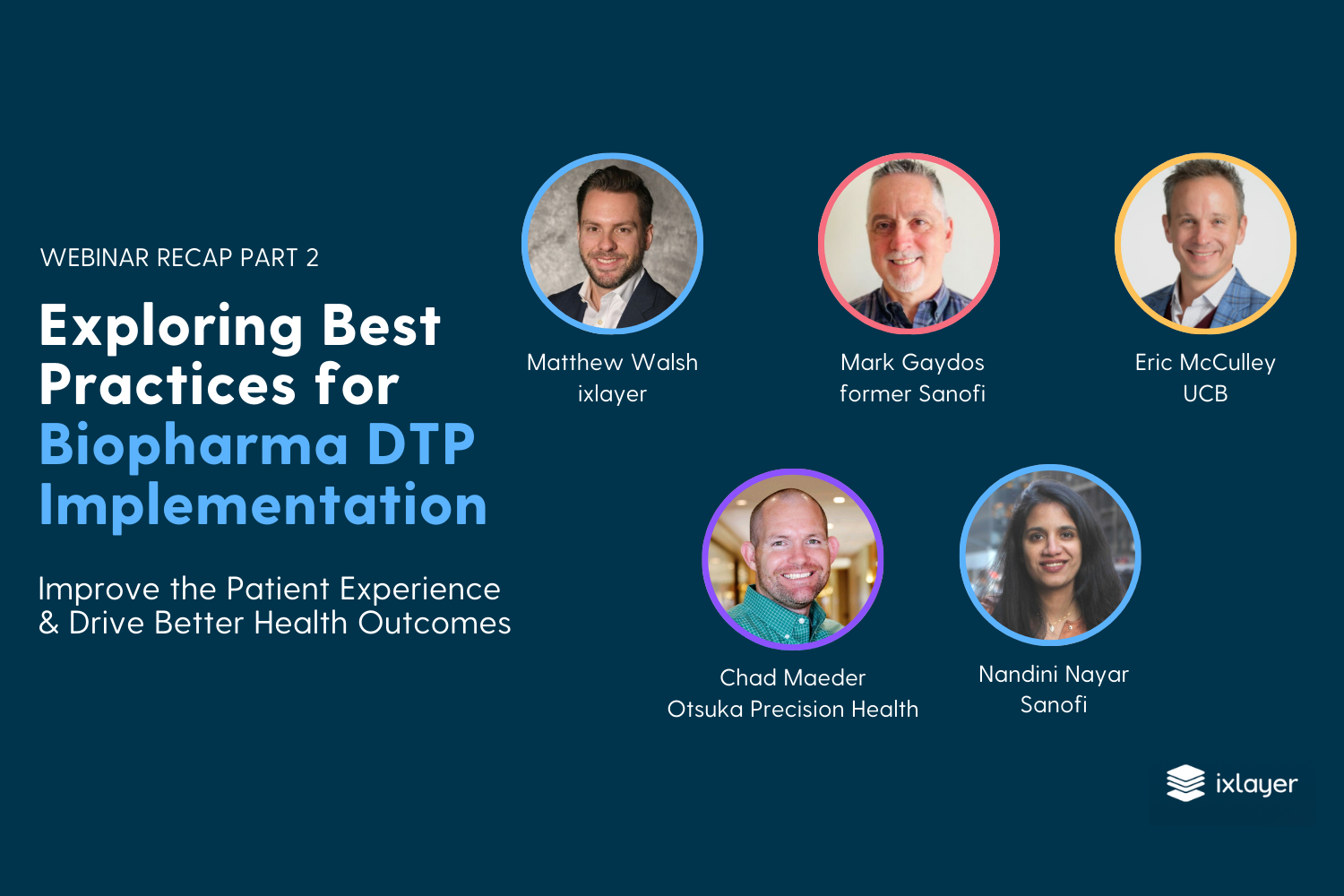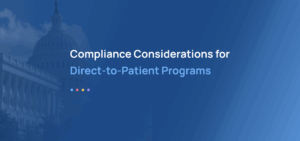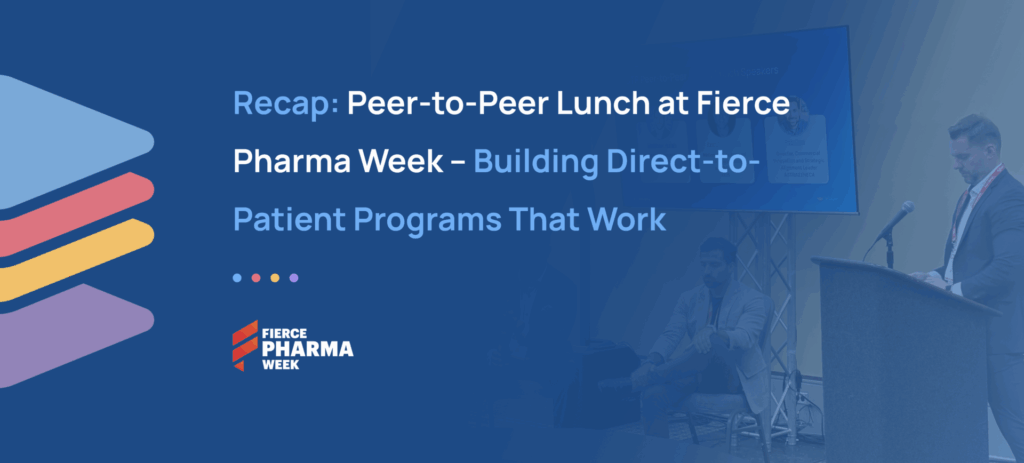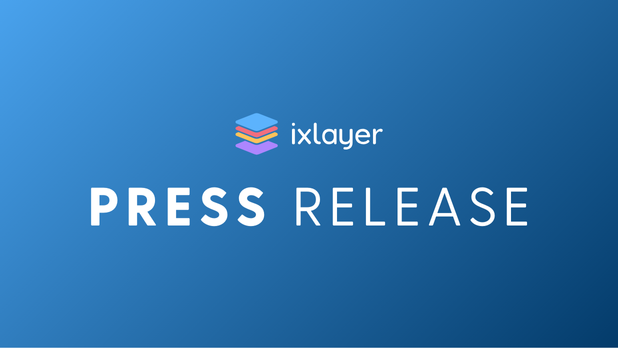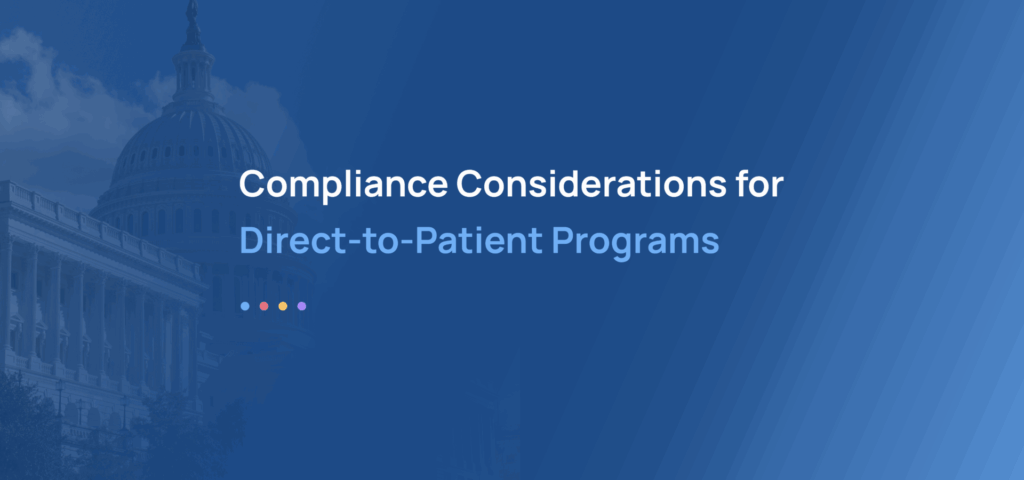Key Takeaways from Exploring Best Practices for Biopharma DTP Implementation – Part 2
ixlayer’s recent webinar in collaboration with The DHC Group, Exploring Best Practices for Biopharma DTP Implementation, clarifies the best practices and misconceptions around direct-to-patient (DTP) programs. The panelists addressed common myths, explaining how these programs operate and deliver impact, with a focus on understanding patients’ needs, the ways DTP supports early intervention and sustained care, and navigating compliance and implementation.
In our two-part blog series, we’ve recapped key takeaways from the webinar.
Part 2: Building Cross-Functional Collaboration in Direct-to-Patient Programs
In Part 1 of this blog series, we explored the transformative potential of direct-to-patient (DTP) care, focusing on patient engagement and access. In Part 2, we shift our focus to the internal dynamics that drive successful DTP initiatives—the cross-functional collaboration required to bring these programs to life.
The Challenge of Aligning The Goals of Diverse Stakeholders
DTP programs don’t fit neatly into a single department or function. Their success relies on input from commercial innovation teams, brand teams, patient services, legal, compliance, medical affairs, and beyond. While each of these teams plays a crucial role, aligning their priorities can be a significant challenge.
As Eric McCulley noted, “We have to become pretty savvy salespeople in our roles because we need the support of our organization and resources to fund some of these visions.”
Getting buy-in requires showing the value of DTP programs beyond a single brand or immediate revenue impact. It’s about creating a long-term vision that balances commercial objectives with patient-centric care.
Eric McCulley went on to say, “One of the unintentional accelerants of [DTP] was the rapid adoption of omnichannel strategies that drove noise in all of the traditional channels we typically leverage to win share of voice and execute on brand-centric marketing strategies. If we’re not getting traction there, maybe it helps us to shift that focus more towards the patient and investments higher in the funnel that ultimately lead to appropriate therapy.”
Nandini Nayar had thoughts on ways forward as well. “To the extent our industry partners—and I’m putting the onus on our partners here—can help us build brand-agnostic platforms so that every single pharma company and disease area is not essentially going out and contracting for its own product, I think that will take us a long way towards sustainability and reducing the saturation of this approach.”
McCulley also advocated for shared, scalable solutions. “There’s much greater acceptance of the need to invest in and build the brand-agnostic platforms that Nandini addressed. This is becoming a more integral part of how we think about elevating our organization as a brand, which has a direct impact on the brands we bring to our patients.”
The Shift from Brand-Centric to Patient-Centric Thinking
A major theme throughout the discussion was the shift away from purely brand-centric marketing toward more holistic patient-centric solutions. Traditionally, pharma has built engagement strategies around healthcare providers (HCPs), but the industry is now recognizing the need to meet patients where they are.
Eric McCully pointed out that, “Historically, we’ve placed a high degree of value on how we serve patients ultimately, but we’ve over-indexed on what we do through our HCPs. As that market dynamic shifts, it moves the needle closer to the patient.”
However, this shift isn’t easy. Brand teams are still measured on brand-specific performance, while other functions like patient services and commercial innovation may be thinking at a higher, above-brand level.
Chad Maeder pointed to data as a key factor in demonstrating the value of DTP programs to internal budget holders. “I think it’s the end-to-end visibility into the patient journey. The data of understanding the true challenges that individuals have during their health experience is extremely valuable.”
Legal, Compliance, and the Need for Guardrails
A core discussion in the webinar was how compliance teams play a pivotal role in shaping DTP initiatives. While many functions may focus on the innovation and patient experience side of the equation, legal and regulatory teams must ensure that these programs remain compliant with existing frameworks.
As Mark Gaydos noted, “The FDA doesn’t have specific guidelines for DTP, so we have to look at existing regulations and ask whether what we’re doing would be considered promotional.”
This means companies must be diligent in distinguishing between educational efforts and promotional activities. The key is ensuring that these programs support the patient’s journey without crossing into direct product promotion in a way that raises compliance risks. Gaydos went on to say, “A lot of [DTP] isn’t necessarily promotional if done right. There’s different support information around disease education and other content that can certainly be done where you’re not even venturing into promotion.”
Beyond promotional concerns, patient privacy and data protection are also top of mind. With DTP programs increasingly involving patient interactions, companies must establish rigorous data safeguards to maintain trust and meet regulatory expectations. “If you’re going to possess data specific to patients in some way, how is it going to be safeguarded? It’s certainly something that should be top of mind,” Gaydos said.
Where Do We Go From Here?
The discussion wrapped up with a call to action: to make DTP a lasting part of pharma’s engagement model, teams must learn to work together effectively. If pharma organizations continue to focus on access, collaboration, and patient-centered design, they have the potential to redefine how to reduce patient barriers to healthcare.
As companies refine their approaches, success will depend on their ability to bridge internal divides, integrate cross-functional expertise, and keep the patient at the center of every decision. By doing so, pharma can move beyond fragmented efforts and establish DTP as a sustainable, high-impact approach to patient care.
CLICK HERE to learn more about how ixlayer works with biopharma leaders to integrate a complete end-to-end, direct-to-patient experience into their marketing campaigns.
About ixlayer
ixlayer is the only end-to-end, direct-to-patient platform built for biopharma and optimized for patient choice. We help biopharma companies connect with patients from testing to treatment with speed, transparency, control and impact.
